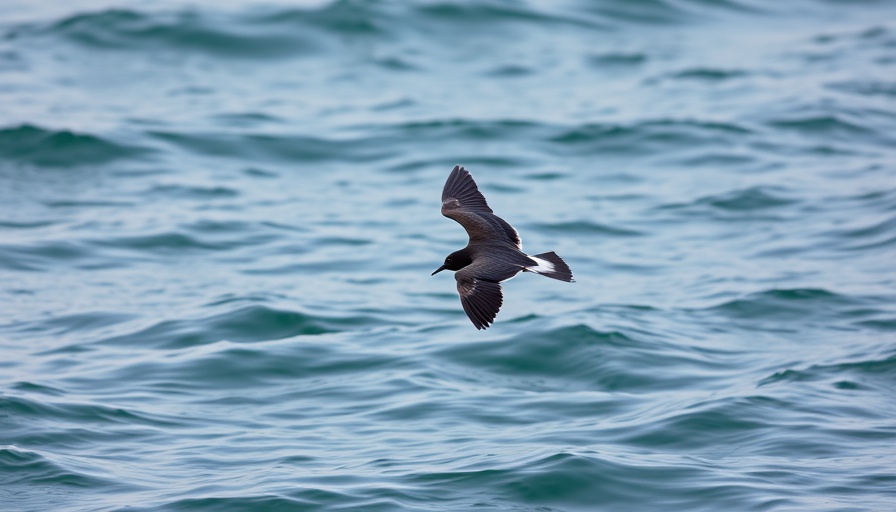
The Enigmatic Wilson’s Storm-Petrels: Nature’s Ocean Messengers
Across the vast blue expanses of our oceans, something magical stirs in the waves. The Wilson’s Storm-Petrel, a diminutive seabird, has long captivated sailors and scientists alike, steeped in mystery and history. Once considered a foreboding omen—its dark wings signaling impending storms—these tiny birds possess traits that reveal invaluable insights about our changing world.
Historical Context: A Blend of Myth and Reality
Historically, Wilson’s Storm-Petrels were infamous among sailors, who believed their presence forecasted treacherous weather. This superstition likely stemmed from their behavior; during squalls, these birds, weighing just over an ounce, would nestle beside ships, finding a momentary refuge from harsh winds. Records of these myths remind us how interconnected human experience with nature has been, often leading to profound misunderstandings.
Climate Change Indicators: The Birds as Barometers
Today, understanding the Storm-Petrel extends beyond lore. Researchers are now observing their feeding patterns in relation to climate change. As these creatures forage in cold, salty waters—rich with plankton—shifts in their behavior might indicate deeper ecological changes below the surface. With climate conditions altering ocean temperatures, this seabird could serve as an early warning system for impending environmental shifts.
Unique Traits and Adaptations
One of the Storm-Petrel’s most fascinating characteristics is its breeding behavior. Unlike many of their seabird relatives, they raise their young in burrows nestled within cliffs, offering a sanctuary from predators like gulls. This adaptation not only highlights the species' resilience but also prompts further examination into how shifting habitats due to climate change might impact their breeding success and survival.
Conclusion: The Call for Conservation
As we explore the intricacies of Wilson’s Storm-Petrels, it becomes clear that this small bird holds more than just a place in folklore. Their presence and habits provide critical insights into the health of our oceans. Protecting these creatures is not just about preserving myth; it is about safeguarding our planet's future. Engaging with and supporting conservation efforts can help ensure that these remarkable seabirds continue to flourish in our changing world.
 Add Row
Add Row  Add
Add 




Write A Comment